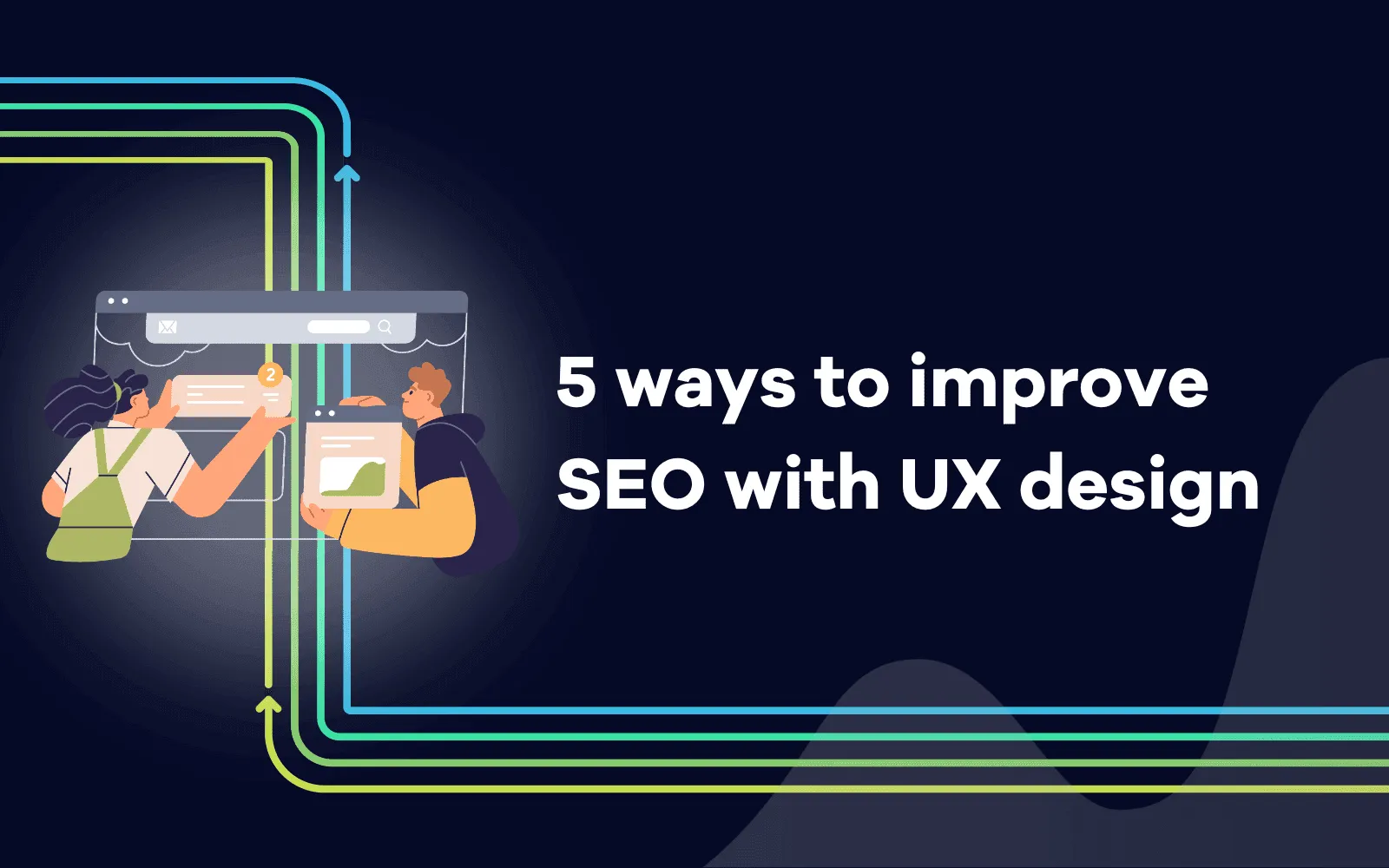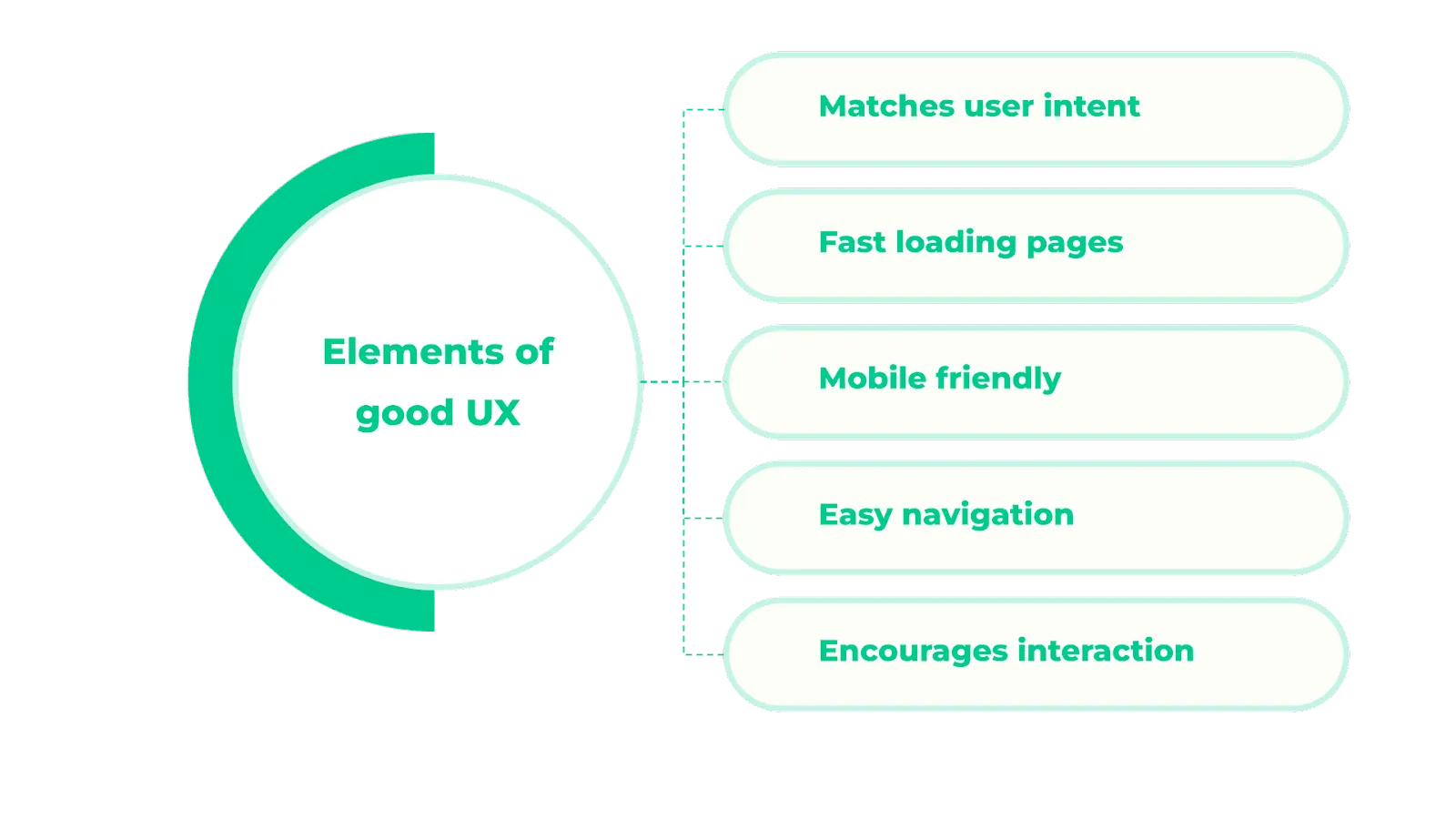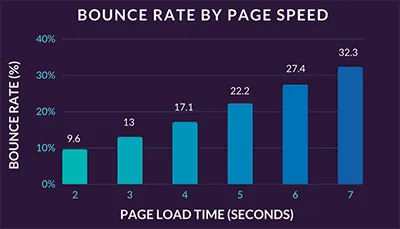
5 ways to improve SEO with UX design

Yolanda Graham
September 30, 2023
Discover how to boost your website's SEO through effective UX design.

Search engine optimization and user experience both focus on keeping users happy.
Search engine optimization helps users find relevant content easily whereas user experience ensures that once they're on the site, they can easily find what they want.
Search engines rank user-friendly websites higher because they want to provide the best results to users. When people stay on a website and engage with its content, search engines attribute this to a website that is easy to use and offers good content – which means good UX design. To maintain their users' trust, they prioritize such sites.
In this article, we’ll take a look into the details of how UX ties into SEO.
Understanding UX elements
UX design is about making websites or apps, user-friendly. This means that visitors to your website should be able to easily read your content, find what they want, and complete tasks like making a purchase or filling in a form.
The main elements of good UX design include: Source: Rightpeoplegroup
Source: RightpeoplegroupDesigning with user intent in mind: They design keeping in mind what people want to do on your website. The goal is to help them do it easily.
Optimizing page speed: One big thing in UX design is making sure users don't get stuck or frustrated. No one likes a slow website, so making pages load quickly is important.
Creating a mobile-friendly design: Good UX design means that your website will look good and work well on mobile devices. With more and more people using their mobile devices to access websites, optimizing your mobile site is a must.
Ensuring easy navigation: People should be able to find what they want on your website without getting lost or confused. That means having clear and simple navigation.
Encouraging user interaction: Your site has good UX design when users want to interact with your content and can do so easily. Provide engaging articles to read, easy-to-follow instructions for what step to take next, or something as simple as a space to leave their comments.
These elements all contribute to a smoother, more pleasant user experience, which can result in users spending more time on your site, visiting more pages, and being more likely to return in the future — all of which improves your site's SEO.
How search engines view UX
Search engines work to give users the best results for what they're looking for. They scan and study millions of web pages to figure out which ones match a user's search..
However, search engine algorithms don't just look at the relevance of content on a web page. They also assess the quality of the user experience. They look at user engagement metrics, how users interact with web pages, and whether or not a site provides a positive user experience.
Search engines look at several things to see how user-friendly a website is. They check how fast a page loads, if it works well on phones, and if users can easily find and use the information.
Impact of poor user experience on SEO
If a website is slow, hard to use, or doesn't work well on phones, people probably won't like using it.
When people quickly leave your website or don't spend much time on it, search engines see this as a sign that your site might not be giving users what they're looking for.
This can then result in lower search engine result page (SERP) rankings for your website.
Improving UX SEO
Some of the most common yet effective ways of improving SEO with UX design are:
1. Design for the user's search intent
Improving your website's SEO isn't just about getting users to your site, but about meeting their needs once they're there. Designing with the user's search intent in mind can enhance both the user experience and your website rankings. Here's how to approach it:
Recognize the purpose of user visits: Understand why users are coming to your site and what they're hoping to achieve. This is the basis of creating content that satisfies their search intent.
Respond to specific queries: For example, when someone searches "how to bake a chocolate cake," they probably want a full recipe, not just ingredients. Your webpage should give a clear recipe and maybe include pictures or a video to help them out.
2. Speed up your web page
Page speed matters a lot for user experience and search rankings. If your website takes too long to load, people might not bother to wait and will return to their search results.
 Source: Section.io
Source: Section.ioHere’s how you can improve the speed of your website:
Optimize images: Big images that aren't optimized can make your page load slowly. Make sure to compress images and pick the right formats.
Use browser caching: Save parts of your website in the visitor's browser. This way, they don't need to download everything every time they visit.
Check your server response time: Your server can affect how fast your page loads. Keep an eye on your speed and address any issues you find.
Consider mobile users: People on mobile might have slower internet. So, it's important to make sure your site loads quickly for them too.
3. Create a mobile-friendly design
More and more people are using mobile devices to go online. So, making your design work well on mobile is important both for a good user experience and for search engine ranking.
 Source: Smartinsights
Source: SmartinsightsFor a mobile-friendly design, think about these things:
Matching screen size: Your website may look good on a laptop monitor but how does it look and function on different mobile devices?
Easy-to-read text: Users should be able to read the text without zooming in.
Simple navigation: Keep the site's navigation simple and intuitive for small screens.
4. Make your site easy to navigate
A user-friendly website that's easy to get around can help people find what they're looking for fast.
Here are some things to think about for smooth website navigation:
Navigation menu: Have a clear and easy-to-use menu so users can find their way.
Search bar: Add a search bar so users can quickly search for what they need.
Organized pages: Organize your pages in a logical way that makes sense to users.
SEO-friendly structure: : Make sure search engines can easily understand and move around your site. This helps your site show up in relevant searches.
5. Encourage user interaction
When people interact a lot with your site, it signals to search engines that it’s a good and relevant website.
This can make users stick around longer and even make search engines notice you more. Here's how to get more of that interaction:
Good content: Share stuff that people find useful and interesting.
Strong action prompts: Use clear and catchy prompts to guide what you want users to do.
Fun features (if you want): Things like comment sections or quizzes can be a fun touch. They can make users spend more time on your site. Not every site needs them, but they can be a good way to get more interaction.
Challenges in merging UX and SEO strategies
When integrating UX design with SEO, you’ll often encounter certain challenges.
Let's look at the main problems and how to solve them.
Balancing aesthetics and SEO-friendly design
Making a site look good and also work well for search engines can be tricky.
Creating a good-looking website is all about having great visuals, a nice layout, and a cohesive design. This means using cool pictures, animations, and design features – but these elements can sometimes slow down the site.
To keep both users and search engines happy, the site has to be fast, well-organized, and packed with the right information. The tricky part is finding the sweet spot where the site is both attractive and search-engine friendly.
The experts who handle these elements are UI and UX designers. UI designers take care of how the site looks, and UX designers handle how it works and feels for users. They work together to pick the right pictures, use up-to-date code, and ensure the site runs smoothly on every device.
UI and UX designers work together with the website development team to get this right. It's all about teamwork, clear communication, and understanding each other's goals to create a site that's both user-friendly and search engine optimized.
Aligning user intent with search engine algorithms
Understanding and designing to satisfy user intent is hard enough and is made more complicated by having to keep search engine algorithms happy as well.
To address user intent, conduct thorough keyword research to understand what your target audience is searching for and why. Use this insight to guide the design process and content creation, so that the user can get their answer easily.
You’ll need to regularly check for changes in search engine algorithm updates to stay aligned.
Mobile optimization
In a world where everyone uses mobile devices, having a mobile-friendly website is a must. Text, images, and videos need to fit well on small screens, load quickly, and be easy to navigate and read.
Use responsive design to make sure your site looks good and performs well on all device sizes. Compress images and optimize code to improve load speed.
Speed vs. functionality
Getting your site to load fast while adding cool features can be difficult to juggle. Some features make the site better for users but can also slow things down.
Keep making your images and files work better, work closely with your web development team, and observe and listen to your users. This way, you’re more likely to be able to avoid slowing down your website with unnecessary features.
It's also a good idea to regularly check how fast your site is using speed test tools. This helps you find areas that need improvement and keeps an eye on how well your site is doing.
Content quality vs. keyword usage
While using keywords is crucial for SEO, using it wrongly can destroy the user experience.
People visit websites for good content, not to see the same word pop up all the time. So when creating articles and blog posts, create content with your audience in mind first, then optimize for keywords.
Use keywords naturally and sparingly throughout your content. Consider using synonyms and related phrases to avoid keyword stuffing while still capturing a range of search queries.
UX and SEO: a partnership for success
SEO and UX design both aim to make users happy. When you bring these two elements together, you’ll build a website that not only attracts people but also keeps them interested and happy.
Focusing on key elements like user intent, page speed, mobile-friendly design, easy navigation, and user interaction, you ensure a seamless user experience. This not only delights your visitors but also signals to search engines that your site is valuable, boosting your search rankings.
Related blog posts

5 LLM Visibility Metrics You Should Track in 2026
SEO is now both about ranking in search engines and being visible in LLMs. We give you five visibility metrics every SEO should track in 2026.
3 December 2025Is LLM Tracking Relevant for You?
LLM tracking is not just for SEOs. It is also relevant for content teams, agencies, marketing leadership, and communication teams. Learn why here.
26 November 2025
How to Find the Best Prompts to Track for AI Visibility
Do you want to start tracking prompts to optimize your AI visibility? We give you seven practical ways to identify relevant prompts to track in LLMs.
9 November 2025
